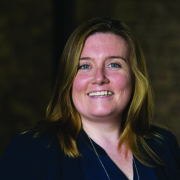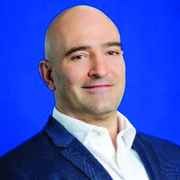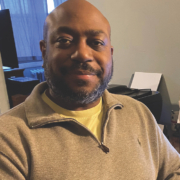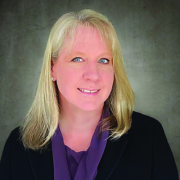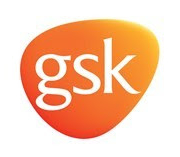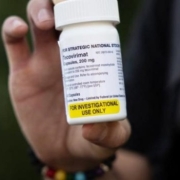Real-world data & real-world evidence – not just for payers
Real-world data & real-world evidence – not just for payers
There has been an emphasis on the use of real-world data and real-world evidence in crafting messages for payers. But experts say the insights generated by RWD and RWE are extremely useful in understanding clinicians and patients.
By Christiane Truelove • [email protected]
Pharmaceutical companies have long since gotten the message that they should be shaping their clinical trials to generate real-world data (RWD) and real-world evidence (RWE). Ever since the 21st Century Cures Act was passed in 2016, FDA has been placing additional focus on the use of these types of data to support regulatory decision making, including approval of new indications for approved drugs.
On the marketing side, one of the main ways to use RWE is in payer negotiations and market access. When evaluating a product, payers need to know how a new product or technology will help them solve a public health management problem in their country, organization, or health insurance plan.
But experts say RWE can be used to answer questions about and gain greater understanding of clinicians and patients, and help pharma marketers prove the value of their products to these audiences as well.
The need for RWE/RWD
“If you unpack all the reasons why payers care about real-world data, and they’re clamoring for all these evidence packages, it’s because they want to manage uncertainty,” says Julie O’Donnell, global head of digital at Evoke Kyne. “They want to make sure that they’re giving access and reimbursement to the best possible medicine. So this idea of managing uncertainty is what’s driving the payers.
“And it can do exactly the same thing for brand marketers and communicators, because if you have that full picture, that understanding of the real-life scenarios around your brand, and you can tap into medical claims data, and wearables data and social data, and really triangulate all of that, you’re doing the exact same thing, managing that uncertainty. You’re going to be able to understand your audiences in much more detail, you’re going to be able to speak to them on their terms, you’re going to be able to segment them and target them.”
Having access to RWE and RWD and only using it for payers is “kind of like having a Ferrari that you drive once a month – it’s a bit of a waste,” O’Donnell says.
Now more than ever, marketers have to create a plan for generating evidence from real-world settings before they even launch a drug, according to Casey McCann, executive director, value, access & reimbursement strategy, Klick Health.
“The RWE generation plan can and should span the life cycle of a drug,” he says. “It can be used to identify knowledge gaps and build in data collection for diverse populations, [and] claims data can indicate how a drug is doing during growth and peak phases. Real-world comparative studies can defend a product when new competitors arise, and studying RWE in off-label use can help to expand indications or support prescription switches to over-the-counter access during a loss of exclusivity.
“The insight that can be gleaned from health economics and outcomes research (HEOR) is valuable at all levels for all our clients. Patient-reported outcomes (PROs) are a great example where non-payer marketers can use patient support programs as a way to generate data usable to marketing for patient and provider messaging.”
Anissa Cyhaniuk, senior VP, RWE global value and evidence services, EVERSANA, believes that by using RWE/RWD, marketers will be able to help clinicians and patients make sure the right people are getting the right treatment at the right time. “I don’t think by any stretch of the imagination, it will ever be perfect. I believe it’s another tool in the toolbox,” she told Med Ad News. “There’s all kinds of real-world evidence out there, from primary market research to large databases to model building. Those are all tools. But when you triangulate all three of them, you can get to a better viewpoint. As the data becomes enhanced, and curation occurs, I think we’ll be able to get to a better spot.”
Preparing to use RWE/RWD
Rommel Fernandez, chief analytics officer at Fingerpaint, says when trying to use RWE and RWD to shape a marketing plan, the first piece of advice he would offer clients is, “be ready to be told something you don’t want to hear.“
“You can go to market with all the best intentions, with a plan, everything you learned up until that point with all the primary and secondary market research and say, ‘Here’s a positioning, here’s where it needs to be’, and then find out that’s not happening, or that’s not where it’s being used best or most,” Fernandez told Med Ad News. “So stay open to it.”
And with the expansion of the use of biosensors, smartwatches, and activity trackers, there is going to be much more information readily available.
“It’s no longer just claims data, there’s going to be all kinds of information that’s tracking the health and wellness of the patients, which brings the need to be very targeted about what you’re trying to solve for,” Fernandez says, adding that having at least a hypothesis up front will help guide marketers in considering which data to look at, “because there’s a lot of data that’s out there, and not all of it answers the question.”
McCann says as the FDA now expects RWE as a supplement and supports traditional Phase III clinical trial data as part of NDAs and submission packages, 90 percent of payers have stated they use observational real-world data for deciding what drugs they cover and make available to their membership. “This is a huge opportunity that we work closely with our client partners on maximizing,” McCann says.
In particular, Klick is working with clients on RWE data collection much earlier in the drug development process than previously practiced. “A prelaunch strategic 5-to-10-year data generation plan – including health economic information – are necessary now for planning a launch and successful lifecycle management for our clients in an increasingly competitive and cost-constrained HC ecosystem,” McCann told Med Ad News.
“I think many pharma companies are still at that first step, focused on the payer, because pharma companies have almost been conditioned not to have data from multiple sources, and not really outside of the R&D function,” according to O’Donnell. “Many of the teams really struggle to curate data, and one hand doesn’t know what the other hand is doing. That muscle to really curate and understand and interpret data needs to be built off that side of the R&D function, so that people can really then maximize the value of the data that they could have and should have to power their brands.”
For clients who want to build an in-house capability to utilize RWE/RWD, O’Donnell says the first thing she would recommend is they should understand the data that they already have or could have access to.
“Most teams don’t even know what their organization licenses, what research they have; it all sits in silos, because most pharma companies are still organized, around in turn of needs and internal functions, branded, unbranded non-promotional medical education, and clinical, so you have these silos built up, and one hand doesn’t know what the other hand is doing,” she says. “And they certainly don’t know what data each other has. So start by mapping what you already have access to. And mapping the type of understanding of your audience you would like to have will allow you to pinpoint where could you invest, who could you partner with. And that will immediately unlock value because you’ll find things you didn’t know you had, and then also help you really invest smartly in getting that data in house and starting to build that picture.”
Clinicians and RWE
Clinicians can absolutely use RWD, “especially in terms of the data here in the United States,” according to Cyhaniuk.
“The data has a wealth of knowledge; it actually also benefits not only the physicians, but also benefits the patients,” Cyhaniuk says. “I believe that there’s this three-part component to treating patients that all play into it. And that’s what all the RWD data kind of holds. It’s the patient, the payer, and the physician. And when the brand marketers as well as the clinicians understand how all those three intertwine, I believe you can come up with better resources and knowledge and pieces of information to provide to all three of those levels.”
According to Ray Johnson, senior VP, management supervisor at Ogilvy Health, real-world evidence – clinical outcomes observed in the real world as opposed to those observed under clinical trial conditions – as well as real-world data – data relating to patient health status and/or the delivery of healthcare collected from a variety of sources – are valuable for clinical audiences, as they provide proof beyond the promise derived from controlled clinical trial environments into how HCPs, patients, and caregivers truly manage the myriad complexities encountered along the treatment journey for diseases across the spectrum of therapeutic areas.
“It would be beneficial for non-payer marketers to explore ways to collaborate with payer marketers to determine the ways in which RWE/RWD can be incorporated into the resources developed for clinical audiences, such as, post-launch updates to their primary detail aid as a way to reinforce clinicians’ decisions to prescribe,” Johnson told Med Ad News.
According to McCann, “Clinical stakeholders are definitely catching on to the value of real-world data and real-world evidence for clinical purposes.”
Klick Health’s RWD is data relating to a patient’s health status and/or the delivery of health care routinely collected from a variety of sources (such as EHRs, claims data, data from clinical registries, and patient-reported data, including home-based or mobile devices). RWE is the clinical evidence about the usage and potential benefits/risks of a medical product derived from RWD.
“RWE can be generated by different study designs or analyses, including retrospective and prospective observational studies,” McCann says. “Health economic and outcomes research, which produces real-world data and real-world evidence, is the future of the industry without a doubt.”
Fernandez says RWD gleaned from sources such as electronic health records can tell physicians how patients are following on treatments and help them convey the message to the patients of the value of certain products or why they should be taking what they are prescribed, as well as the financial issues many patients face.
“When you see a doctor and they prescribe you something, and you kind of do the mental math right and ask yourself, do I really need to take this or not?” Fernandez says. “This day and age, with everything else post COVID, some of it is a trade off. … Do I take that product, especially if it’s new, and it’s not even covered? Do I pay full rack rate for a product, or do I just not take it, or ask for a generic, if there’s a generic equivalent? So for the healthcare providers, I think [real data] gives them a lot more insight to not only the patients that they serve, but how to best reach them.”
McCann points out that the insight that RWE demonstrates to clinicians is how an intervention performs outside the narrow confines of the research setting. He says a community physician serving an underserved population may glean essential information on the long-term safety and effectiveness of a drug in relevant populations.
“In today’s therapeutic world, practice is based on evidence and guidelines,” McCann says. “To be sure, RWE will increasingly be seen as vital information for HCPs and healthcare decision-makers alike. Developing a holistic evidence generation plan inclusive of all RCTs and the types of analysis above will become not only critical to a brand’s success but will begin to drive performance in-market.”
And as value-based care (VBC) and pay-for-performance metrics are used to create and evolve therapeutic protocols to align reimbursement with payer preferences, this area will continue to rise in importance for clients’ business, McCann adds.
Real-world data is something clinicians increasingly want more of, and can offer marketers a competitive edge in disease areas where there are a large number of products already available. “I think there’s a little bit of fatigue, you know, every product comes out, and they talk about safety, efficacy and tolerability,” O’Donnell says. “And the question is, are you a ‘me-too’ brand, [and] what are you doing differently? If you, as a brand team, can fill gaps in your understanding and start aggregating that real-world data much earlier in your life cycle and have that at launch, the conversations you’re having with customers are so different, you really can feed back to them the pain points and challenges that they’re seeing in clinical practice. And so that conversation isn’t about, ‘Here’s more data doctor,’ but it’s really about their problems, their challenges, and their patients’ needs. So I think you’re having a much more human-centric conversation than you are if you’re just talking about the core product data. You’re building a much, much richer picture about the value of the brand.”
Beyond marketing campaigns, RWD and RWE can provide valuable information for clinicians creating disease-state guidelines and for those on the front lines treating patients, according to McCann.
“In the U.S., we are in the midst of a health crisis, one disproportionately impacting communities that have historically been underserved by the medical industry,” he says. “What are the treatment outcomes of patients in rural areas and communities of color? How do they compare to those of patients in urban areas or predominantly white neighborhoods? We have an enormous opportunity with RWE to answer these critical questions, and, I believe, a tremendous responsibility to know what factors impede positive clinical outcomes on the population level.”
RWE can help clinicians take into account healthcare disparities and treatment inequities fueled by social determinants of health (SDOH), including housing, racism and other violence, job opportunities or lack thereof, access to affordable fresh foods, pollution, language preference, and literacy levels, McCann says.
“Understanding where we fall short in health equity is exactly what RWE can help document, describe, and ultimately provide us with the information we need to correct these catastrophic problems,” he says. “With real-world evidence, we might just stand a chance at turning this crisis around and enabling our clients across the healthcare continuum to collaborate on innovative solutions that are ‘beyond the pill,’ so to speak.”
At Ogilvy Health, the payer and brand teams worked together on the launch of the first product in a new class of therapy for a chronic cardiometabolic condition.
“As the payer/PHDM marketers, we liaised closely with the brand team’s medical and HEOR partners to understand the potential challenges and opportunities related to generating RWE/RWD in advance of the competition coming to market,” Johnson says. “In addition, we collaborated with the professional promotion marketers so that they would be aware of the clinical and economic information – and potentially in a position to favorably differentiate ‘proof positive’ product performance within the critical time frame post-launch in advance of competition.”
O’Donnell says RWE/RWD will add to the storytelling marketers want to do around their brand – the scenarios about when, where, and how products are used in real life, the challenges that are being faced by clinicians’ peers and by the patients.
“Storytelling will not only draw people into your brand but also allow any organization to create better medical education and better patient support programs. So again, that all creates a picture of value around the brand. That is much, I suppose, much deeper and much more beyond that,” O’Donnell says. “The value story is much more around what’s in it for them as a healthcare professional, and you can tell that story in a much stronger way, a more robust way, when you have real-world data. Otherwise, you are really shooting in the dark; it’s a guessing game.”
She adds that harnessing RWD not only takes the guessing out of the equation for the marketer and for the communications team, but also for the healthcare professionals, because they can know what subsets of their patient populations are going to respond to a therapy.
And when it comes to educating physicians about rare diseases, RWE and RWD allows marketers to look at a whole host of patients, who are not just specific to one practice, or one KOL.
“We’re looking at the people that are in the rural places, and the urban places and maybe don’t have the best insurance,” Cyhaniuk says. “And when we look at treatment paths, we look at that whole conglomerate to say this is how these kind of people are being treated.
“I’ve walked into meetings where people have said, ‘Whoa, that’s not right.’ And I’m like, ‘Well, yes, but you’re the KOL looking at that rare disease, you know about that rare disease, but Dr. John over in Utah, in some small city, has never seen it.’ So providing those insights and helping those smaller physicians, especially with rare disease, and target and help identify those patients, it will allow these patients to be able to get those treatments.”
Patients and RWE
RWE and RWD are giving pharma an expanding window into patient preferences and how they utilize and access treatment, experts say.
According to McCann, many companies today use their existing mechanisms to gather real-world data on the patients they are treating. “For instance,
patient-reported outcomes surveys and other data collection tools are being incorporated into clinical trial programs,” he says.
After launch, data are being collected from patient support programs (PSP) so pharma companies can better understand how they are treating specific populations, including patients in underserved communities. “This is an often untapped opportunity to gain insights into different diseases and therapies,” McCann says. “Increasingly, we see PROs in particular becoming core to consumer messaging campaigns and patient satisfaction woven into HCP messaging as well.”
O’Donnell points out that there has been a lot of research that shows that patients are willing to share their data if they think they can get value back in terms of better managing their own condition and care. “I think patients are open to this feedback loop between them and their healthcare providers,” she says. “But I think what has happened today is that feedback loop hasn’t been in place. There’s been a lot of apps gathering data, but not necessarily really delivering value to the patient.”
This kind of feedback loop has long been in place for consumer marketing. “If you’re a soccer mom with three kids, you can look at what car is other soccer moms with three kids buying,’” O’Donnell says. “And there’s the potential to apply that same thinking in health care, by triangulating this data in an anonymized and very compliant and safe way.”
In the end, patients want to know what’s in it for them, and understand that with the data that they’re giving up, they’re getting value back.
“I think that can happen through patient-support programs, education, and the ability, especially for chronic disease patients, to understand what’s next,” O’Donnell told Med Ad News. “Most people with chronic diseases, there’s a lot of fear around not knowing how their condition might evolve, or what’s around the corner. So by looking at reward data, again, you can help people to charge their potential future and understand what type of interventions might help them. And I think that’s unbelievably valuable to anyone.”
 |
Chris Truelove is contributing editor of Med Ad News and PharmaLive.com. |

